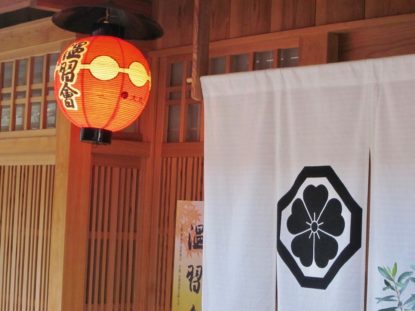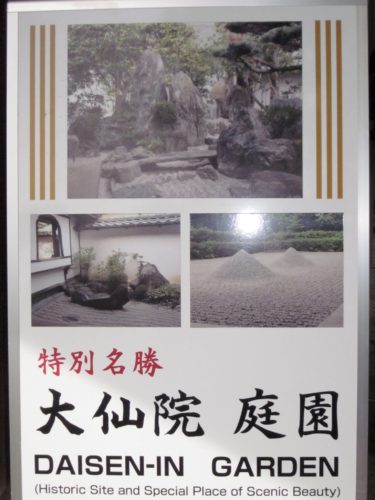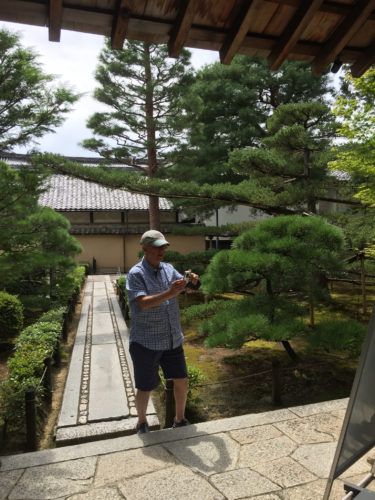
Kyoto, Japan
KYOTO
“Asia is not going to be civilized after the methods of the West. There is too much Asia and she is too old.” Rudyard Kipling
From the gold city of Kanazawa, we rode to Kyoto by Japan Railway Thunderbird Express. Kyoto was Japan’s capital for over 1,000 years before Tokyo took its place. Kyoto is the city of Zen temples and tea ceremony, of glorious imperial gardens, and also sprinkled with art museums and modern cafes. It’s the yin of the country.
Our first stop was the Golden Pavilion (Kinkakuji), the retirement villa of shogun Ashikaga Yoshimitsu. After his death in 1408, the building was turned into a Zen temple according to his will. Constructed out of wood in the middle of a large pond, its top two floors are completely covered in gold leaf. We strolled around it taking in the view of the golden reflection shimmering over the rippling surface of the water. Its hard to believe that the building has burned down numerous times and rebuilt again and again. The present structure was rebuilt in 1955.
On another note, the entrance tickets to each site were so pretty that I have included the one we got at Kinkakuji.
The next day, the peace and serenity of Ryoan-ji Zen Temple welcomed us as soon as we entered its premise. Last time I visited the temple was in 1997, I was emotionally overwhelmed by its ephemeral power. It had instilled me with deep stillness. I was determined to return one day with Manoj. And we did!
Rocks of various sizes and bonsai trees are carefully arranged throughout this sacred precinct. The dry garden is a rectangular expanse of not grass but gravel. The carefully raked gravel in various patterns, rocks of different sizes, bonsai trees and moss are symbols of life and how it should be lived. Sitting quietly on the steps facing the rectangular expanse we contemplated as have many before us for centuries. What does the garden symbolize? Human dilemmas? How to live Here and Now?
The resident monk, Soen Ozeki, is responsible for daily raking of the gravel. He is also a poet. He gifted us with a copy of this poem:
Each day in life is training
Training for myself
Though failure is possible
Living each moment
Equal to anything
Ready for everything
I’m alive—I am this moment
My future is here and now
For If I cannot endure today
When and Where will I?
Gion District
As in Takayama, the geiko district in Gion was a collection of streets defined by old wooden buildings and teahouses. We spotted a geiko getting into a car and two other walking in their zori sandals and kimonos. For local tourists, it was like having glimpse of Hollywood actors. Geikos are skilled in traditional arts, singing and dancing. They undergo five years of training in various arts before becoming professional geiko.
Nijo Castle
The guided tour through the five connected buildings of Nijo Castle, built almost entirely of Hinoki cypress, was an unforgettable experience. Covering 36,000-square-foot area, its interior is lavishly decorated with paintings using gold leaf and elaborate wood carvings. The castle impresses with the power and wealth the shoguns had. One of its striking feature was the sound of the nightingales. When we walked through the corridors they squeaked like the birds. The sound protected the occupants from sneak attacks and assassins.
Tea Ceremony and Origami
Tea ceremony is one of the most beautiful legacies of Kyoto. Japanese have been drinking tea for a thousand years but it’s ritualized form developed in 16th century. Warlords, wealthy merchants and literati competed to arrange the most lavish and aesthetically arresting ceremony. Highly showy tea rooms and refined ceramic ware were later replaced by understated and plain rituals. We attended such a ceremony—simple, artistic and joyful. Our hostess served us tea. We bowed gently to receive the cup, turned it clockwise thrice and took sips. The slow and graceful movements of our hostess were worth imitating.
Another hostess taught us how to create birds and gift boxes using paper—the art of origami.




























